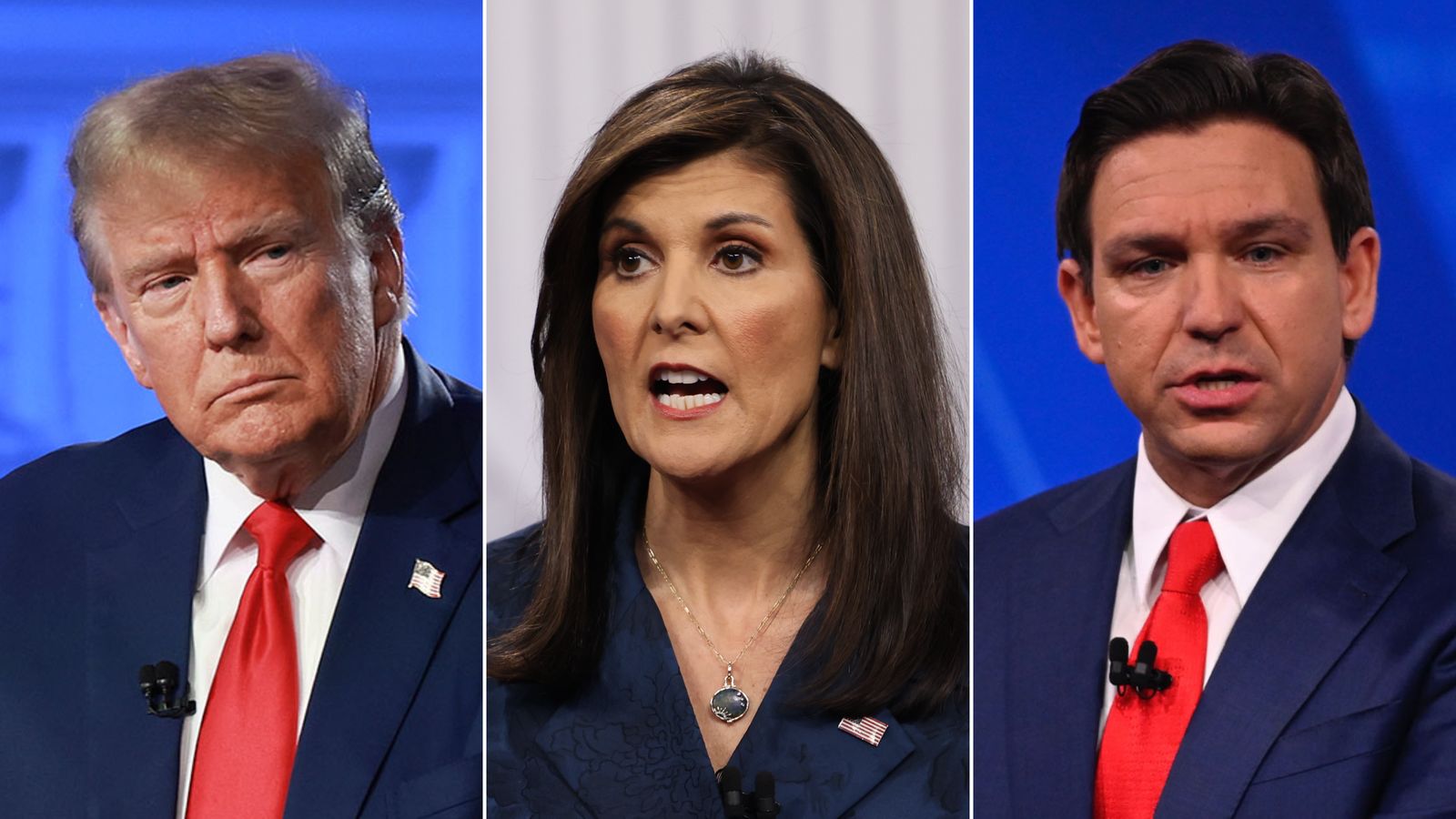Republican candidates and their supporting groups have set a new record in Iowa, spending over $123 million on advertising, surpassing the previous record set during the 2020 caucuses. The top three Republican presidential contenders – Donald Trump, Nikki Haley, and Ron DeSantis – along with their associated super PACs, account for over 70% of all ad spending in Iowa since 2023, totaling more than $90 million.
This massive spending spree significantly outpaces the $84 million spent on advertising ahead of the 2020 Iowa caucuses, when Democrats were vying for their party’s nomination. Haley and DeSantis, who are both striving to position themselves as the leading alternative to front-runner Trump, have been launching aggressive ad campaigns against each other, accusing their opponent of failing to address the economic and national security threats posed by China and criticizing their gubernatorial records.
Ad Spending Breakdown
Haley’s political network has emerged as the top spender in Iowa, with her supporting super PAC, SFA Fund, spending over $31 million on ads. Her campaign has also spent an additional $4.9 million on advertising. DeSantis’ operation follows closely, with a trio of super PACs formed to support his presidential bid spending over $31 million on ads in Iowa, and his campaign contributing an additional $3 million. Trump’s super PAC, MAGA Inc., has spent about $11.4 million on advertising in Iowa, ranking as the third largest individual advertiser, with his campaign spending an additional $6.8 million.
Attack Ads and Closing Strategies
The massive influx of ad dollars has fueled a barrage of attack ads as the rival candidates and their allies intensify their criticism in the final stretch of the race. The ad with the most funding on Iowa airwaves since the start of the new year is an attack spot from SFA Fund, the pro-Haley super PAC, targeting DeSantis and accusing him of weakness on the issue of China.
DeSantis’ operation has retaliated with its own spot, accusing Haley of failing to confront China. The DeSantis campaign’s most funded ad since the start of the new year targets both Haley and Trump, leaning into culture wars. The ad accuses Haley of “supporting the radical trans agenda,” and says that Trump is “no better.”
Final Days Before the First Votes
In the final days leading up to the first votes, DeSantis’ campaign and its allied super PACs seized on Haley’s remark that New Hampshire, home to the second nominating contest, “corrects” the results of Iowa’s caucuses. The closing ad from DeSantis’ campaign highlights Haley’s comment, saying, “Haley disparages the caucuses and insults them. It’s Ron DeSantis who embodies and defends Iowa’s values of faith, family and freedom.”
Trump’s Position in the Race
Trump has largely avoided criticism on the Iowa airwaves, as Haley and DeSantis have devoted only a fraction of their ad budgets to targeting the front-runner compared to the sums they’ve directed toward attacking each other. However, in the closing days of the race, allies of Haley and DeSantis have taken a few shots at the former president.
Despite the lower ad spending, Trump continues to enjoy a wide polling lead in the first nominating state. The remaining candidates have combined to spend about $33 million on advertising in Iowa since the start of 2023.
With Haley and DeSantis primarily attacking each other, the top ads from Trump’s network in Iowa since the start of 2024 have had a decidedly general-election feel, criticizing the Biden administration while touting Trump’s first-term economic record.
As the race to the caucuses continues, the campaigns and their allies have aired dozens of other attacks, mocking each other and seizing on vulnerabilities in each other’s records. The top ad from Haley’s team in Iowa overall, which her super PAC has spent over $1.7 million airing, calls DeSantis a “disaster” and touts Haley’s electability, comparing her performance in general election polls to DeSantis and Trump.
Meanwhile, Trump’s top ad in Iowa over the course of the campaign, with more than $1.4 million behind it, is another broad appeal to voters promoting his first-term record.

